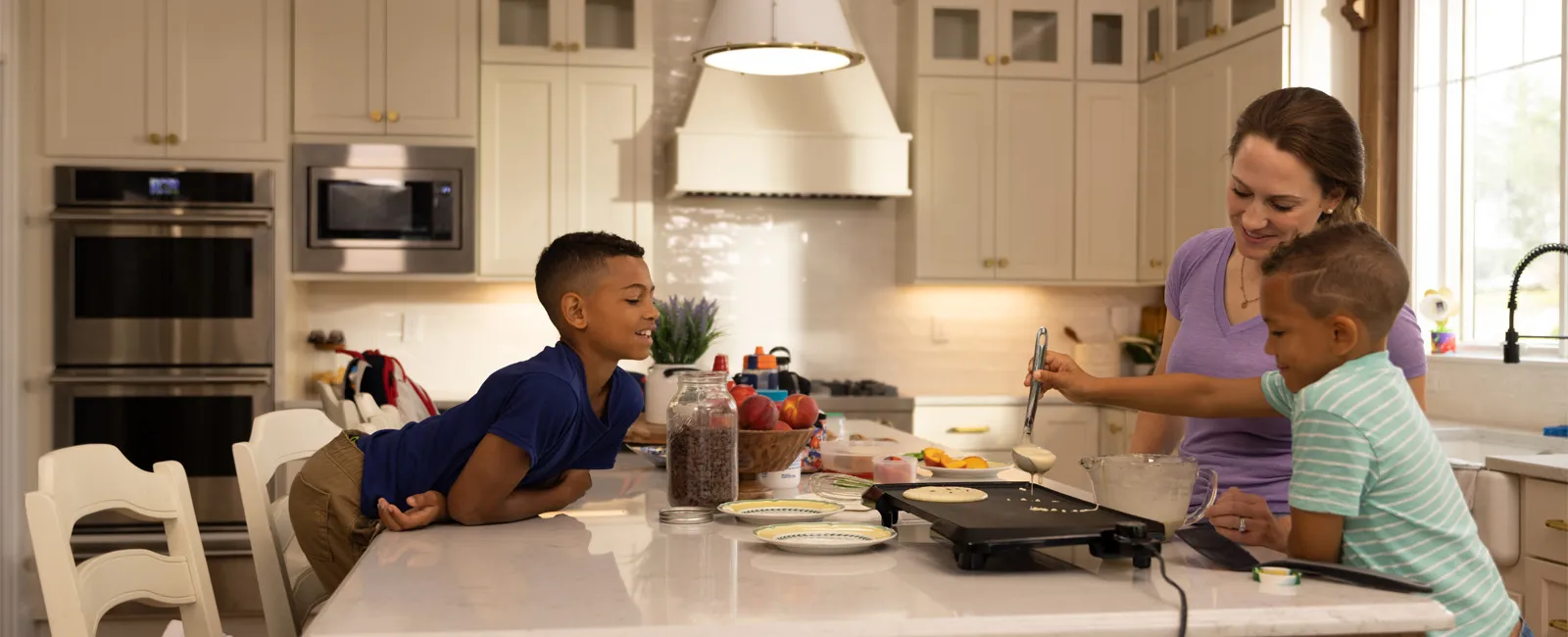
Whether it’s a dirty house, deck, patio, fence, or grill, pressure washing works faster and better in most cases. Here’s a quick primer on what you need to know to rent or buy and use a pressure washer safely and effectively.
Choose the right equipment
Pressure washers are generally classed as follows:
• Light duty — up to 1,900 PSI (pounds of pressure per square inch)
• Medium duty — 1,900–2,800 PSI
• Heavy duty — 2,800–3,100 PSI
• Commercial — greater than 3,100 PSI
The higher the PSI, the more dangerous the machine and greater potential for causing damage, such as stripping paint, even when used correctly. Light-duty machines are ideal for pressure washing cars, patio furniture, grills, and painted wood trim, as there is lower risk of accidentally stripping paint or causing other kinds of damage. Medium-duty machines are more suited for cleaning houses, decks, patios, or fences.
Another key specification for pressure washers is GPM — gallons of water per minute; the higher the GPM, the more surface area a pressure washer can clean. Most consumer machines feature GPM in a range of 1-4, while commercial machines might go as high as 10. As with vacuum cleaners, it is the combination of the two (PSI x GPM) that determines how fast and effectively a machine will clean.
Should you find yourself with a machine that is too powerful for the job at hand, you can decrease pressure either by using lower-pressure nozzles or standing further away from the object you are cleaning.
You will also need to choose between gas and electric powered. Gas-powered machines have greater range but are generally noisier and emit fumes. Electric-powered machines are quieter and fume-less, but you also have less range of movement and need to be constantly mindful of where the power cord is as you move through cleaning jobs.
Consider adding a long extension wand to your machine rental or purchase if you intend to clean a house, garage, shed, barn, or other large structure as, due to recoil, it is unsafe to use a pressure washer while standing on a ladder to reach high places.
General warnings
Power washers are easy to use, but they are not toys. They can easily tear through human flesh at high power and/or close range. Avoid using around children or pets and never point the nozzle (even in jest) toward another living being. Keep safety mechanisms engaged when not spraying and always wear safety or sunglasses to protect eyes. Wear sturdy, close-toed shoes and clothes you don’t mind getting wet. Never pressure wash surfaces known or suspected to be coated with lead paint. And be especially wary of electrical-shock hazards, which include power lines, outdoor sockets, A/C compressors, utility meters, and so forth.
Learning & planning
Before using a pressure washer for the first time, take time to learn all of the machine controls and to understand what each nozzle attachment is designed to do, how much pressure each one delivers, at what angles, and for what general purposes recommended by the manufacturer. Nozzles can often be rotated to spray water in either vertical or horizontal patterns for different uses, so experiment to see what patterns work best for different jobs. Lower-pressure nozzles should generally be used for power-washing more delicate painted surfaces, such as cars, patio furniture, wood trim, and stucco. Applying soap/detergent should also be done at low pressure. Use higher-pressure nozzles for washing away grime (after treating with detergent) from cement, wood, brick, metal, and vinyl home siding.
Job prep
Before revving up the power washer, use heavy-duty tape to cover electrical outlets, doorbells, security cameras, lint/bathroom vent outlets, and so forth. For gas grills, disconnect the propane tank and tape over the starter and other knobs. Cut back shrubs, remove climbing vines, and any other greenery near or touching surfaces you intend to clean. Inspect also for signs of wildlife (bird and stinging-insect nests, bunny rabbit/chipmunk dens, and so forth). Select a plant-safe power-washing detergent, but also water nearby plants thoroughly so their roots will absorb a minimum of runoff detergent. Serious stains, such as mildew or rust will need special treatment. For mildew, pretreat with a weak bleach solution; for rust, apply a chemical rust remover (but NOT using the pressure washer’s detergent tank). As with all stains, test solutions in an inconspicuous spot before applying more generally.
Basic pressure-washing process
Add detergent and water to the machine’s tank, following manufacturers’ instructions for dilution. Apply the detergent solution using low pressure, working from low to high. Allow the detergent to sit for a bit and do its chemistry thing to bond with grime, but not for so long that it dries. Using high pressure and an appropriately angled nozzle, pressure wash the soap off, working from side to side and top to bottom (as with dusting indoors). If you are unsure how much pressure to use to avoid damage, increase your distance from the surface you are cleaning and move in gradually to increase pressure. Be sure to avoid hitting light fixtures, anything electrical (even covered), as well as door edges, window casings, windowpanes, and caulking.
Add drying time!
If pressure washing in preparation for painting, it’s important to allow several days for surfaces, especially wood, trim, and shingles to dry thoroughly.
As chores go, pressure washing can be sort of fun, but it’s still messy, hard work requiring strict safety and damage-control protocols. If you don’t care to deal with all that, take the easy route and call in a PRO!

